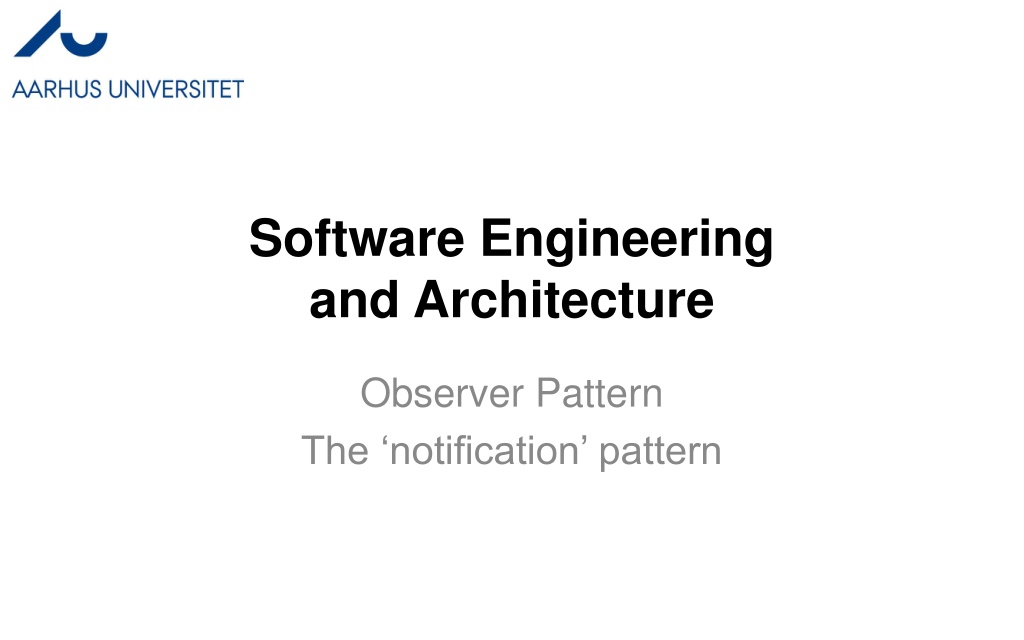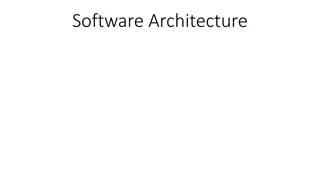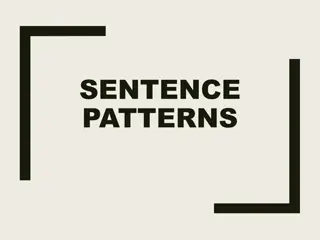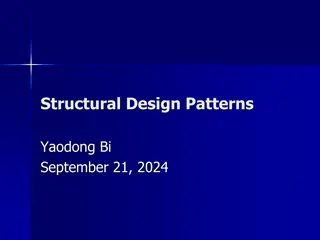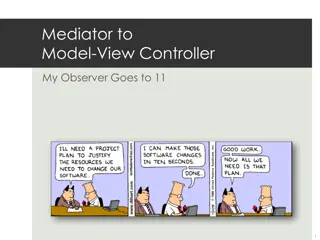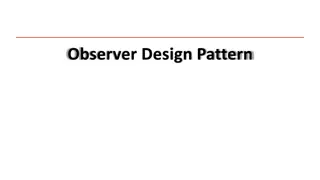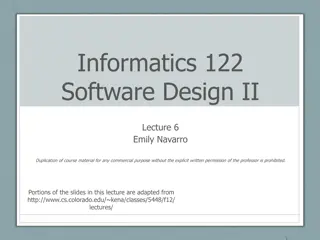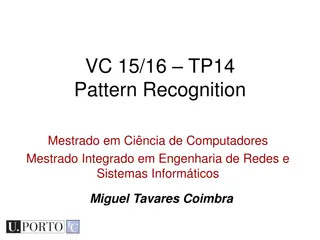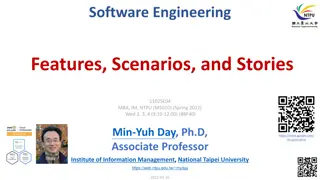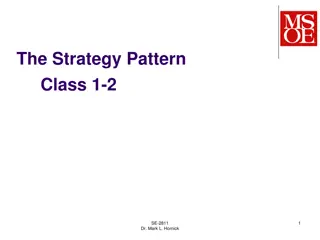Understanding the Observer Pattern in Software Engineering and Architecture
Dive into the Observer Pattern, a key design pattern in software engineering that establishes a one-to-many relationship between objects. When a state change occurs in one object, all its dependents are automatically notified and updated. Explore real-world examples and the role of the Observer Pattern in maintaining consistency across graphical user interfaces.
Download Presentation

Please find below an Image/Link to download the presentation.
The content on the website is provided AS IS for your information and personal use only. It may not be sold, licensed, or shared on other websites without obtaining consent from the author. Download presentation by click this link. If you encounter any issues during the download, it is possible that the publisher has removed the file from their server.
E N D
Presentation Transcript
Software Engineering and Architecture Observer Pattern The notification pattern
Notifications A recurring task When some object s state change, then notify those who subscribe Examples The BrightSpace forum/discussions SoMe notifications AU CS Henrik B rbak Christensen 2
Reflecting State Changes Selected object s state is shown 4 different places on the UI. All update concurrently so they all are correct. AU CS Henrik B rbak Christensen 3
And Tons of it AU CS Henrik B rbak Christensen 4
Original Problem Challenge when graphical screens were invented: writing programs with a graphical user interface multiple open windows showing the same data keeping them consistent Xerox Parc in the 1980ies AU CS Henrik B rbak Christensen 5
HotStone Problem When TauStone is designed in 2034 with a new Hero type, US Chef, whose power adds +7 health to all own minions, whose health is below 3 and whose names begins with a consonant How does our UI, built in 2023, know what the h to update??? AU CS Henrik B rbak Christensen 6
Observer Intent Define a one-to-many dependency between objects so that when one object changes state, all its dependents are notified and updated automatically. Example Spawning pool s health increases 4 UI elements are notified and can update accordingly pool.deltaHealth(+4) CS@AU Henrik B rbak Christensen 8
Observer: Structure CS@AU Henrik B rbak Christensen 9
The Roles Subject / or Observable Observer / or Listener AU CS Henrik B rbak Christensen 10
Observer Protocol Protocol: A convention detailing the expected sequence of interactions or actions expected by a set of roles. CS@AU Henrik B rbak Christensen 11
That is When a state change happens in Subject Then it loops over all registered Observers and for each calls its update() method (= the notification) AU CS Henrik B rbak Christensen 12
Exercise Objects The spawning pool The detail map The overview map The object detail UI The object command UI Which are subject(s)? Which are observer(s)? pool.deltaHealth(+4) AU CS Henrik B rbak Christensen 13
Observer Benefits open ended number of viewer types (run-time binding) need not be known at develop time change by addition, not by modification... any number of views open at the same time when executing all guarantied to be synchronized Liabilities update sequence can become cyclic or costly to maintain CS@AU Henrik B rbak Christensen 14
Push / Pull Variants Observer is implemented in two variants Pull variant Update() method with no parameters/state details Push variant Update( .) method(s) with parameters/details about state change Often in the form of a specific event class Predominant variant today Exercise: What is benefits of each? Hint: Consider a subject with 56 different independent state changes? AU CS Henrik B rbak Christensen 15
Observer Terminology Observer pattern is used in so many places that a special vocabulary is often used, as well as naming conventions on the methods. Observer often called Listeners I listen to the events that occur in the subject Observer methods often called Callback functions (Java/Swing) The subject emits Events I did this state change CS@AU Henrik B rbak Christensen 16
Observer Terminology Observer pattern is used in so many places that a special vocabulary is often used, as well as naming conventions on the methods. The methods that receives the events are often named onX() In the Observer/Listener class The methods emitting the events are often named notifyX() In the Subject class Example: Android CS@AU Henrik B rbak Christensen 17
Mandatory Note It is quite easy to encode a new hero power ala US Chef, that adds +7 health to all own minions, whose health is below 3 and whose names begins with a consonant But, how do we update all the right elements of the UI, without redrawing everything from scratch all the time??? Answer: Let Game emit Events for every detailed state change Let the UI listen for these events And update the corresponding UI element accordingly AU CS Henrik B rbak Christensen 18
Mandatory Note Let Game emit Events for every state change US Chef Hero power used in a Game adds +7 health to all own minions, whose health is below 3 and whose names begins with a consonant First onHeroUpdate() event emitted (argue why) Update the Hero Graphics on the UI Next a series of onCardUpdate() events emitted, one for each affected card Update the UI representations of those minions (only) AU CS Henrik B rbak Christensen 19
Mandatory Note The UI is then a listener on the game events And implement the onXEvent() methods ala AU CS Henrik B rbak Christensen 20
Mandatory Pitfall Intent Define a one-to-many dependency between objects so that when one object changes state, all its dependents are notified and updated automatically. Exercise Can there ever be fired an update event when an accessor method has been called on the Subject? Morale: All notifyX() calls are always in (exercise solution) methods! AU CS Henrik B rbak Christensen 21
WarStory A previous SWEA student group had notifyGameWon() Called in their game s getWinner() method Which means UI is notified, which called (guess) What was their problem? AU CS Henrik B rbak Christensen 22
Summary Intent Define a one-to-many dependency between objects so that when one object changes state, all its dependents are notified and updated automatically. CS@AU Henrik B rbak Christensen 23
And Sidebar No, neither LoL nor StarCraft II uses the observer pattern for UI updates GameEngine architecture Loop 60+ times a second Redraw every visible element from a scratch based upon the state in the underlying game model No wonder we need hefty graphics cards AU CS Henrik B rbak Christensen 24
